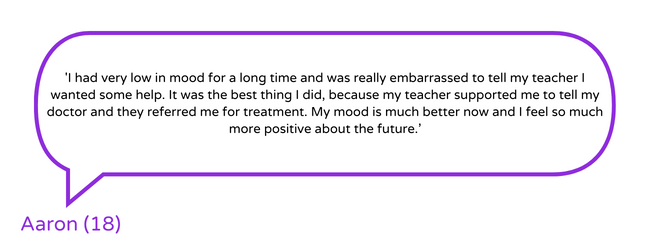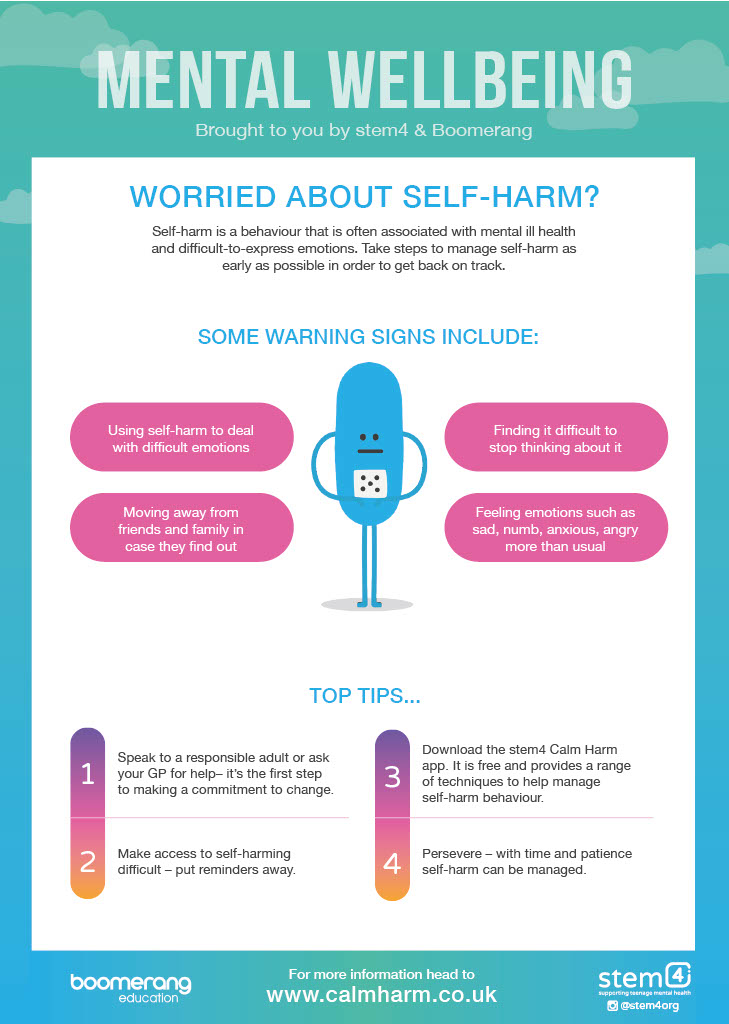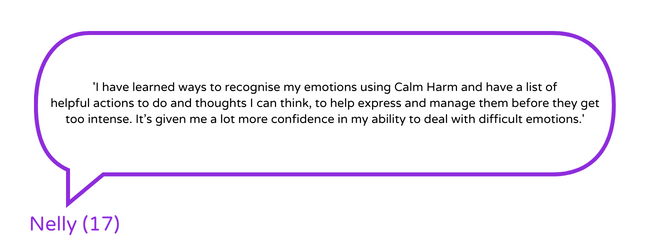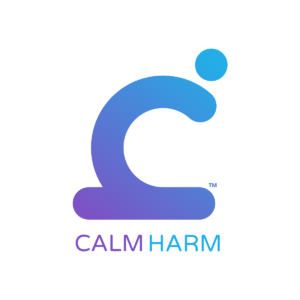Self-Harm
What is self-harm?
Self-harm is when someone hurts themselves to communicate difficult emotions. If a young person is self-harming, it’s important they should take early steps to see their doctor for help to find ways to deal with the underlying issues which can include poor self-esteem or low mood.


About self-harm
Self-harm often occurs in teenage years, often occurring as a symptom of increasing mental ill health. Take steps to stop self-harm behaviours in their tracks by speaking to a responsible adult or see a doctor. You can also contact Childline (0800 1111), Samaritans (116 123) or 111 for support.

Download the Calm Harm app
Calm Harm is an award-winning app that uses principles from evidence-based Dialectical Behaviour Therapy (DBT) to help manage the urge to self-harm. It can be downloaded from the App Store or Google Play. Find out more at www.calmharm.co.uk.




